Keys to Success at Downwind Starts
by David Dellenbaugh
There arenít too many races that start downwind anymore, but when they do, itís good to know a few strategic and tactical moves.
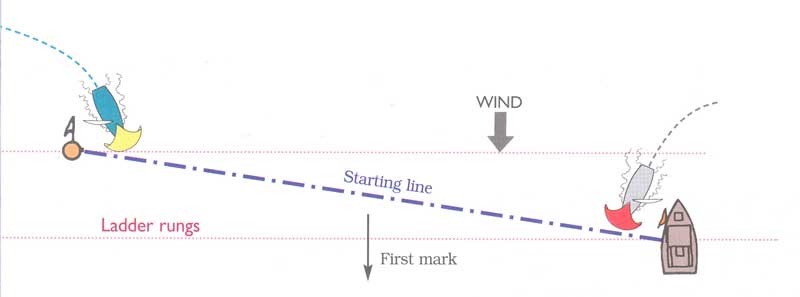 |
| Picking the Ďfavoredí end * At an upwind start, the favored end is the one thatís farther upwind, or on the higher ladder rung. At a downwind start (one where you canít fetch the first mark), the favored end is the one thatís more downwind, or on the lower ladder rung. To determine which end is more downwind, you can use the same techniques you use for finding the favored end at an upwind start. In fact, one easy method is to pretend that you are starting to windward. If you figure out which end would be favored for an upwind start, the other end will be favored for going downwind! * The real Ďfavoredí end is the one where you will have a better start, taking into account many factors. But often we use this term to describe the end that is farther to windward or, at a downwind start, to leeward. |
Most downwind starts are a lot like upwind starts. You want to be on the
line, near the favored end, with speed and clear air. However, itís harder
to get a good start downwind because if youíre in the front row you often
get bad air from the boats that are not. And sometimes itís hard to remember
how barging works when you approach a starting mark on a reach or run.
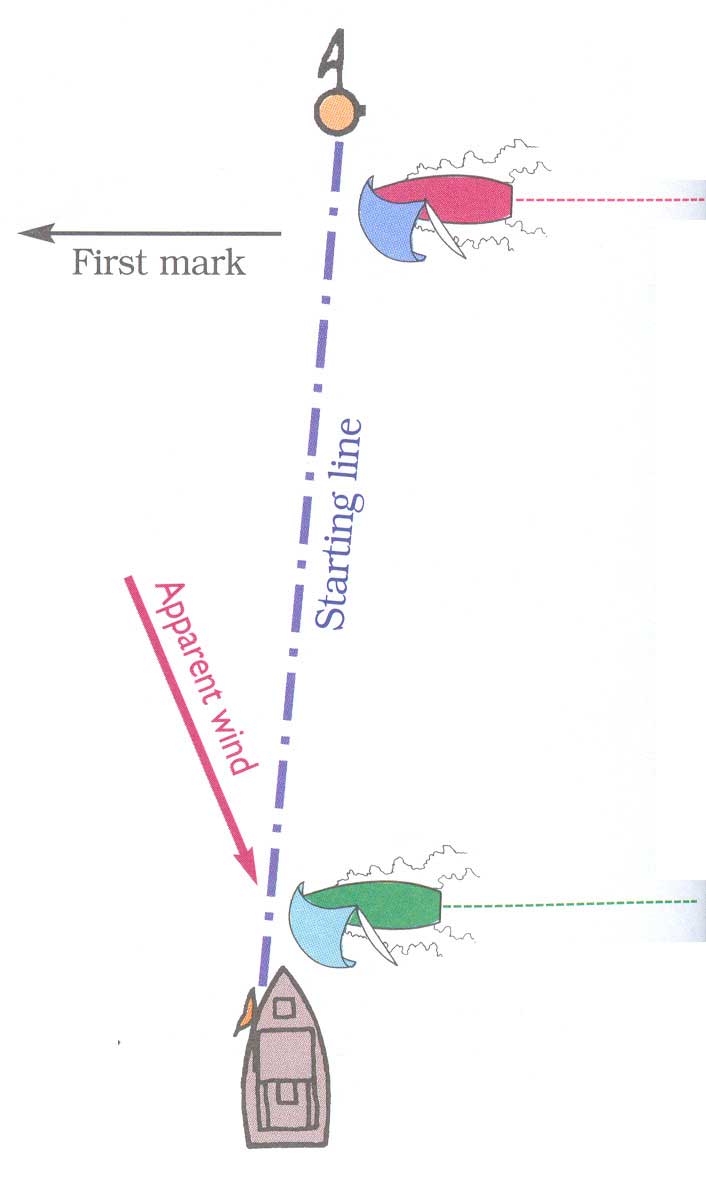 |
Starting on a reach When you start the race on a reach, picking the favored end is usually a little more complicated. Sometimes you can just choose the end thatís closer to the first mark, but this does not consider the fact that starting at opposite ends will give you different sailing angles (and speeds).
|
One obvious difference is that most downwind starts involve spinnakers. This
places an added premium on preparation and crew work. Here are ideas about
getting a better start when the first leg is a reach or run:
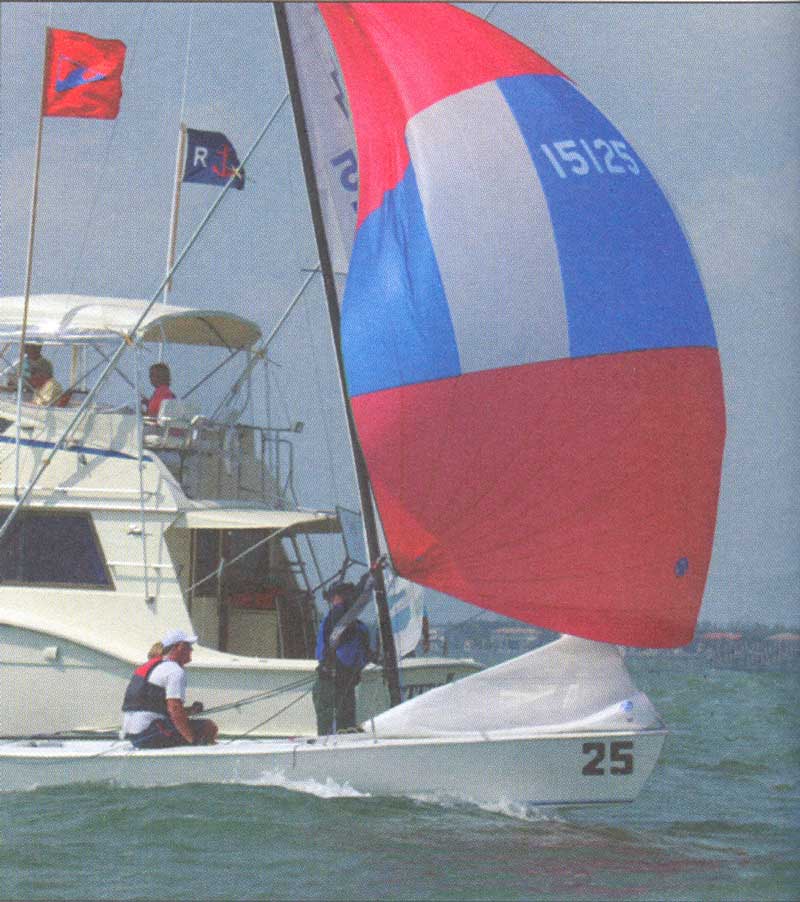 |
| Photo by JH Peterson |
ē If you have a choice of head-sails, start racing with your biggest one.
This might not be the perfect sail for going upwind in the existing
conditions, but you donít have to go upwind ó youíre just looking for the
best speed while reaching to the starting line.
ē Since you wonít be racing upwind, set your jib leads outboard and forward
so they are as effective as possible for reaching. Ease the backstay,
outhaul and cunningham to their offwind settings.
ē Before the start, make sure you sail the angle of the first leg with a
spinnaker. Spend enough time to get in the groove for the existing
conditions before you start the race. Use this time to get a feel for the
boat, figure out your target speed, and pre-set your topping lift height and
vang tension.
ē During the starting sequence, try the following approach: Go to the place
where you want to start, then sail a port-tack beam reach for about a
minute. Tack and sail on a starboard tack beam reach for another minute or
so until you get back to your starting place. Then tack again and repeat
this. Adjust your timing so you end up on the starting line at the gun.
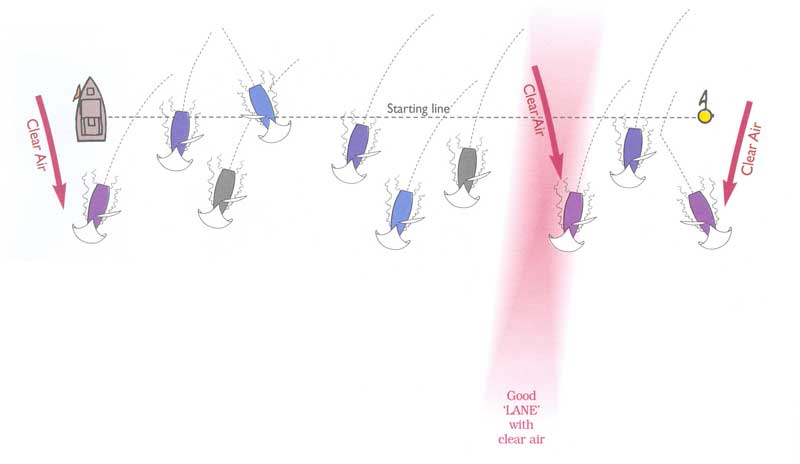 |
| Ingredients for a good downwind start The goals and tactics of starting downwind are not a lot different than starting upwind, except the mayhem is usually compounded with spinnakers.
|
| Lane of clear air - The tough thing about upwind
starts is that if youíre in the third row off the line you also have bad
air. But if youíre in the back row at a downwind start, at least youíre
sure to have clear air! Your goal, however, is to be in the front row
with a good lane of clear air.
|
By following this pattern you can practice your final approach a few times,
maintain good speed throughout the pre-start, and avoid getting too far away
from the spot where you want to start.
| Setting up for a downwind start Once youíve decided where you want to start (X), figure out how you can get there with speed and a lane of clear air. Many sailors approach a downwind starting line on a course thatís roughly perpendicular to it (Approach A). My recommendation is to approach the line on a tighter angle, from a direction that is more nearly parallel to it than perpendicular. I like this Approach B for several reasons: 1) You will have better speed when you cross the starting line. A beam reach is your fastest point of sail, so approaching the line on roughly this angle will give you your best VMG when you bear off to cross the line. 2) You are more likely to have the right of way. By approaching the line on a hotter angle, you will be on the leeward side of most boats (including everyone using Approach A) and therefore they will have to keep clear of you. 3) It will be easier to time your start so you cross the line just after the gun. If you take Approach A, you have the least possible flexibility in adjusting your timing. By making your approach roughly parallel to the starting line (and a few boatlengths from it), you can luff your sails (or boat) to slow down and simply bear off when itís time to start. |
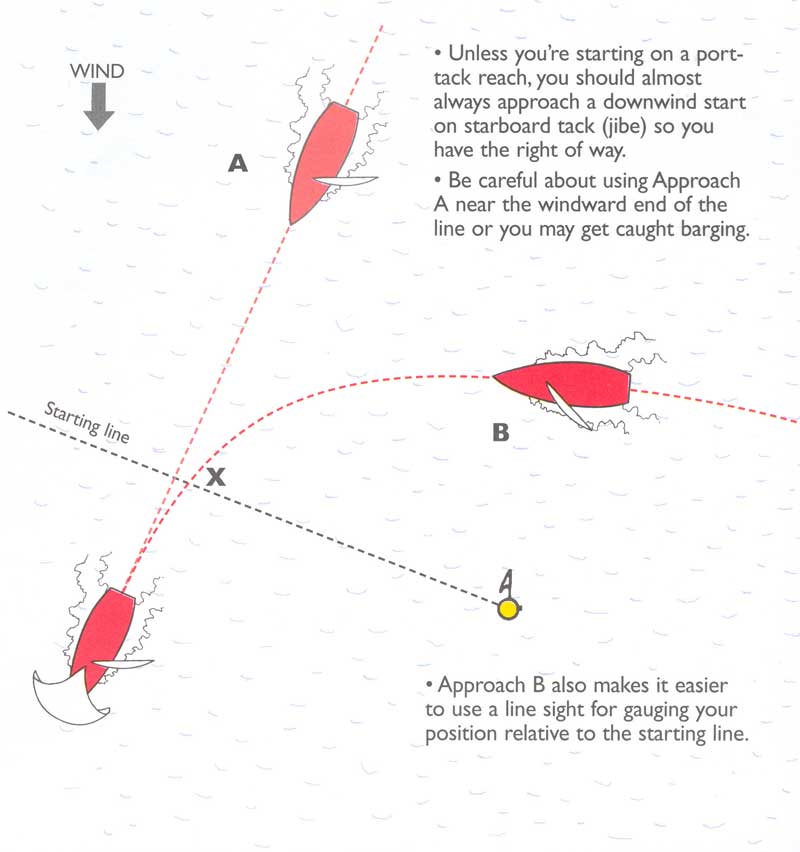 |
Dave publishes the newsletter Speed & Smarts. For a subscription call:
800-356-2200 or go to:
www.speedandsmarts.com
All contents are copyright (c) 2007 by
Northern Breezes, Inc. All information contained within is deemed reliable
but carries no guarantees. Reproduction of any part or whole of this
publication in any form by mechanical or electronic means, including
information retrieval is prohibited except by consent of the publisher.